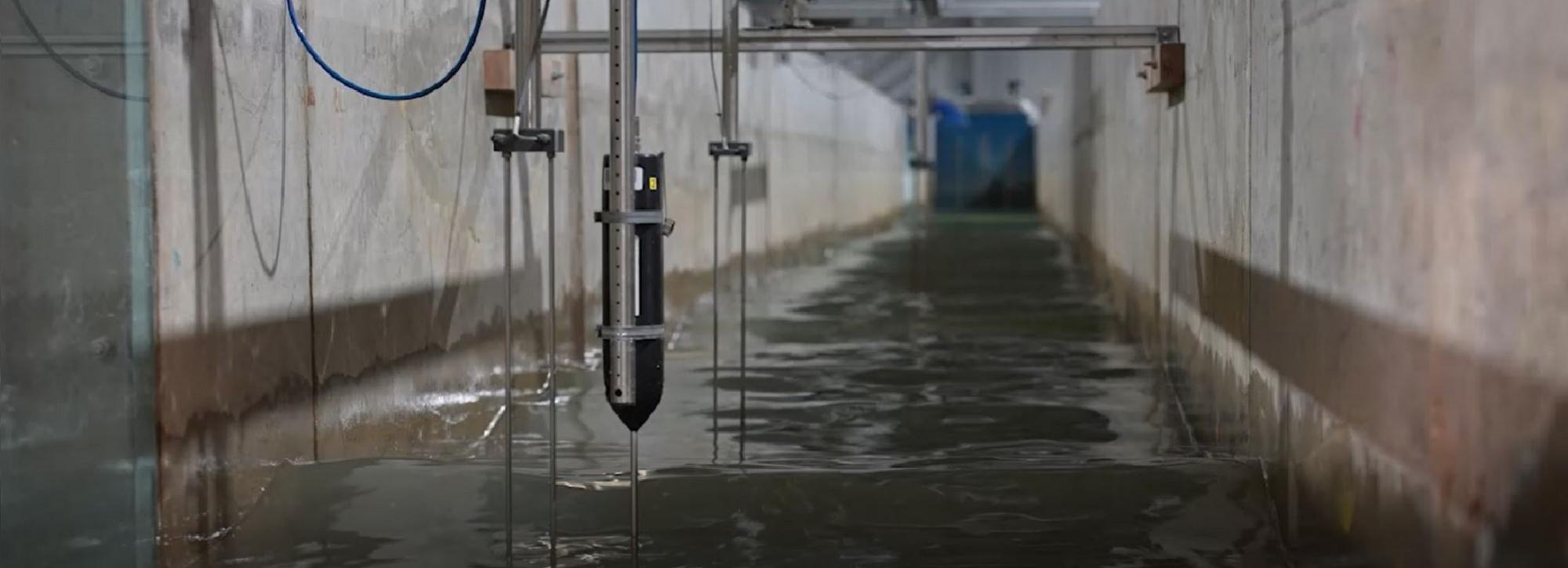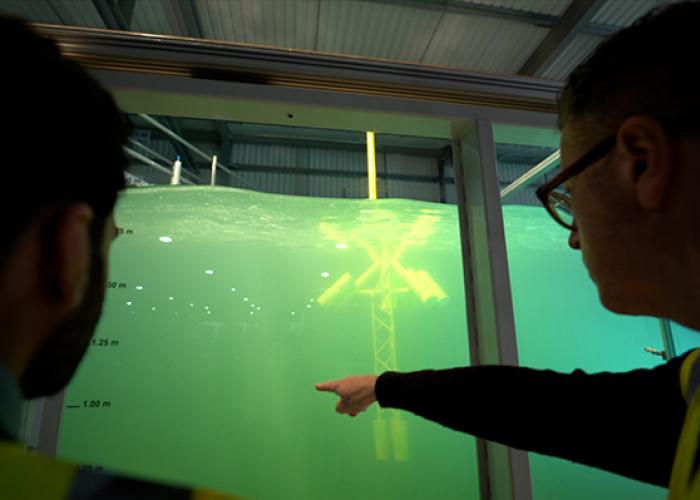
Investigating sand-gravel beach morphodynamics to help protect coastlines
We’re conducting research to better understand how the varying mixtures of sand and gravel on a beach influences natural coastal protection. Our lab tests will be used to assess and improve the ability of beach morphodynamic models to predict how mixed sand-gravel beaches respond to stormy conditions, making it easier to effectively protect our coastlines.
In stormy weather, a sandy beach erodes sediment towards the sea, forming offshore bars, while a gravel beach moves sediment towards the shoreline, forming a protective berm. Gravel beaches therefore form effective defences as they dissipate quite a large amount of the wave energy coming into the coastline.
Many beaches are composed of mixtures of sand and gravel. Tools exist to model how purely sandy or gravel beaches separately respond to waves, but to date there has been some uncertainty in representing the process with sand and gravel mixtures. Currently, there is no generally accepted method to model mixed sand and gravel beach morphodynamics and there are few suitable datasets to test the performance of the models used for beach modelling for sand-gravel mixtures.
To address these problems we ran a series of tests in our labs to collect data to assess and validate the performance of a model from purely sandy beaches all the way through to gravel beaches, including mixtures inbetween. As the only variable was the ratio of sand to gravel, we could see how different mixtures affect the response of the beach to a known wave condition.
Our tests aim to determine how the proportion of sand to gravel on a beach affects its response, and to identify the point at which a beach switches from acting like a gravel beach to a sandy one.
The data collected will allow us to validate a beach morphodynamic model for beaches composed of varying ratios of sand and gravel. It forms part of HR Wallingford’s internal research programme and is guided by our commercial work and previous PhD studies by our people.
We aim to develop a tool that can, not only model solely sandy or gravel beach morphodynamics, but the full range of sediment compositions. Once we have confidence in this tool, we can then apply it to the natural environment and predict how mixed sand-gravel beaches will respond, for example, to coastal protection, nourishment schemes or extreme events.
The detail
In a series of flume tank experiments, we created beaches with a 1:7 slope, comprising different sand-gravel mixtures.
We ran a series of tests where we kept the waves, the water level, and the initial beach slope the same.
We started off with a mixture of 100% sand, followed by 100% of gravel, to give us our two baseline conditions. Then we tested with ratios at 20% intervals, for instance 80% gravel to 20% sand.
During the experiments, we collected data, such as the water level time series, using wave gauges. A traverser ran along the beach and generated a 2D profile of it changing over time. A vectrino measured the near bed wave orbital velocities, which told us how the waves were interacting with the sediment near the bed.
Our run-up measurements used a novel method. An overhead camera captured movements on the upper slope of our modelled beach, allowing us to see the reach of the wave running up the beach, before it went back down again. We installed a series of green ground control points along the edges of the flume, and used the terrestrial laser scanner to work out exactly where those points were relative to the flume. We used this to orthorectify the images that we captured from the overhead camera.
This allowed the use of automatic analysis to track water levels and give us a series of run-up distances throughout the duration of the experiments. This provided important information, given that waves permeate through gravel more easily than sand, so waves on a gravel beach typically have less run up than on a sandy beach.
Want to know more?
Contact our project lead

